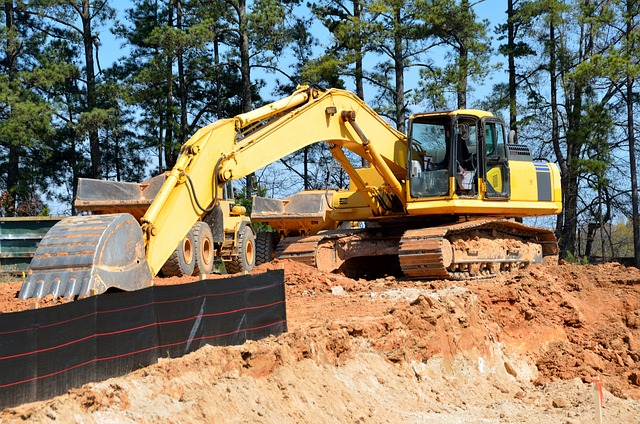Winter is a time of year when equipment, like portable concrete crusher, needs extra attention. In this blog post, we will provide a checklist of items that should be on the mind of any heavy equipment owner or operator in the winter season. From oil changes and tune-ups to replacing worn-out parts, this heavy equipment maintenance checklist will help ensure your equipment is running at its best. Keep in mind that winter is also a time when accidents happen, so it is important to be prepared for anything!
What is the purpose of your equipment maintenance checklist?
During the winter season, it is vital to keep your equipment up and to run to avoid any potential problems. By following a proper equipment maintenance checklist, you can ensure that everything is functioning properly and that there are no unexpected delays due to damaged or defective components.
Some of the items on this checklist include:
– Keeping your drives clean by regularly formatting them and deleting old files
– Checking all cables for wear and tear, as well as fraying or kinks
– Regularly tightening screws on hardware devices
– Lubricating moving parts such as cam gears, chain saws, etc., with special oil blends
These simple steps will help you stay safe while working outdoors in colder conditions. By taking care of your gear early in the season, you’ll avoid any unnecessary frustration down the road.
A complete heavy equipment preventive maintenance checklist
The winter season is a time of year when preventative maintenance on heavy equipment can pay off. Here’s a comprehensive checklist to help make sure your equipment stays running smoothly during the cold weather:
– Inspect brakes and hoses for leaks, damages, or corrosion. Brake fluid should be checked every three months and replaced as necessary. Hoses should be inspected monthly and replaced if they show any sign of wear or tear.
– Check drive belts for cracks or signs of tensioning (they may need to be tightened). Belts should also be tightened after long periods of use or when temperatures drop below freezing overnight.
– Tune engine oil levels, filters, spark plugs, air filters, and fuel injectors as needed based on manufacturer recommendations. Test engine performance periodically using diagnostic tools such as dynamometer pulls (see operator manual for more information).
– Perform anti-icing procedures recommended by the manufacturer: add water vapor over areas where it will contact blades/rotors; spray with de-icer concentrate before turning the machine on in icy conditions; set the idle speed at least two mph below operating speed to prevent the build-up of ice crystals around moving parts.
How to maintain heavy equipment?
Maintaining heavy equipment can be challenging, but it’s worth the effort if you want to keep your machines running smoothly. Here are some tips to help you get started:
- Regularly check fluids and levels. Ensure all fluid reservoirs are full and any leaks have been fixed. Check oil levels and replace them as needed.
- Clean parts regularly with a pure solvent or detergent solution. Use enough pressure to break up the dirt, then rinse well with water afterward. Be careful not to damage screws or other pieces while cleaning!
- Keep tires properly inflated. Overinflated tires can cause catastrophic failure of the machine, which could lead to serious injuries for workers involved in maintenance operations.
- Inspect bearings and other moving parts for wear or damage. If necessary, replace worn components as soon as possible using new OEM parts from the manufacturer.
By following these simple guidelines, you can keep your machinery running like new without spending a lot of time on maintenance tasks.
How do you calculate repair and maintenance costs?
Repair and maintenance costs can be a costly (and time-consuming) burden for businesses that use heavy equipment. Depending on the type of equipment, repair and maintenance may involve:
- Replacing worn or malfunctioning parts.
- Repairing the damage done by accidents or weather conditions.
- Performing general preventive maintenance.
To help you estimate these costs accurately, you need to know your specific equipment specifications and how often it requires repairs or updates. You also need to factor in the time necessary to carry out repairs or maintenance tasks and the cost of any needed materials.
Once you have all this information, you can calculate your annual repair and maintenance expenses. This number will give you an idea of where your money is going each year – whether it’s towards new parts for old machines, alternate forms of energy that reduce wear and tear on engines & gears, etc.
How often should you do preventative maintenance?
Regular preventative maintenance for heavy equipment is important to keep them running smoothly and prevent any major problems. The frequency of preventive maintenance depends on several factors, including the type of machinery being operated and its overall condition. However, doing at least two monthly checks should be enough for most businesses.
Here are the four main types of preventive maintenance that you should perform:
-Regular service and tune-ups: Your engines, transmissions, brakes, fuel systems, etc., should be checked and tuned as needed to ensure smooth operation. This will also minimize downtime due to repairs or breakdowns.
-Periodic inspection: A periodic inspection can identify potential issues before they become serious problems that require more extensive repair work that can often be fixed during this type of inspection.
-Inspection after an accident or incident: After a big crash or malfunctioning machine, it’s crucial to inspect it thoroughly for damage and correct any issues immediately. This helps reduce the chances of another such event happening in the future.
-Preventive maintenance checks at least once yearly – even if everything seems normal! Even small things like worn-out bearings or cracked engine valves can cause significant problems down the road undetected.

